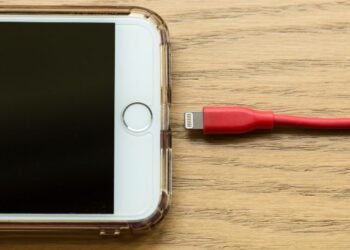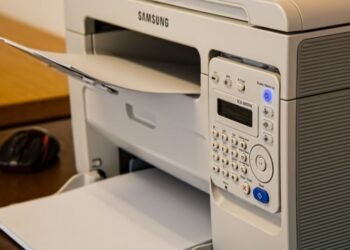Discover the real answer to “Can You Upgrade RAM On MacBook Air”… uncover the truth… limitations and best alternatives for better performance.
I still remember the day I asked myself a simple question: “Can you upgrade RAM on MacBook Air?” It was two years after buying mine … a sleek M1 model that I absolutely adored. It was light… quiet… and lightning fast. But as time went on… my work evolved. I began editing videos… keeping twenty browser tabs open and juggling multiple productivity tools. Suddenly… my once-zippy laptop began to crawl. Around the same time, I also started using my iPad Air Keyboard for quick notes and on-the-go tasks, realizing how much a good accessory can complement a device.
Naturally… I assumed I could just pop open the case and slot in more memory. After all… that’s what I used to do on my old Dell. But with Apple… things are never that simple … and what I discovered was equal parts fascinating and frustrating.
The Short Answer: No… You Can’t Upgrade the RAM on a MacBook Air
Let’s get right to it.
No … you cannot upgrade the RAM on any MacBook Air after purchase.
Apple solders the memory chips directly to the motherboard… or in newer models… integrates them into the processor itself. Once you buy a configuration… that’s it … you’re locked in.
The MacBook Air’s design doesn’t allow for after-market modifications. Unlike some Windows laptops… there are no open slots… no screws to remove a memory stick… and no hidden upgrades. Apple’s engineers designed it this way intentionally … for performance… efficiency… and durability.
But if you’re like me… you’re probably wondering why Apple would make something so restrictive.
Why You Can’t Upgrade RAM on MacBook Air … The Real Reason
When you dig deeper… you realize that Apple’s approach isn’t just about control … it’s about design evolution.
1. Unified Memory Architecture (UMA)
Apple’s custom chips … the M1… M2… and M3 … use what’s called a Unified Memory Architecture. This means that the CPU… GPU… and Neural Engine all share the same pool of memory located directly on the chip.
This setup makes data transfer incredibly fast and efficient. Instead of having separate memory banks… the components access a single… ultra-low-latency pool.
The downside? You can’t change it. It’s literally baked into the processor … like chocolate chips inside cookie dough. Once it’s baked… there’s no adding more chips later.
2. Soldered RAM in Older Intel Models
If you own an older Intel-based MacBook Air… the story isn’t much better. From 2008 to 2020… every Air model had its RAM soldered to the motherboard. You couldn’t replace it or upgrade it even back then.
This design choice allowed Apple to keep the Air ultra-thin and energy-efficient. Unfortunately… It also meant sacrificing flexibility.
3. Security Integration
Modern MacBook Air models also tie memory into their security systems. The RAM communicates with the Secure Enclave Processor (SEP) for encryption and hardware-level protection. This integration makes tampering nearly impossible. Even if you could physically replace the chips… macOS might not boot or recognize the new configuration.
So the short version: the answer to “can you upgrade RAM on MacBook Air” is a technical no… backed by Apple’s design philosophy of efficiency over modularity.
MacBook Air RAM by Model … Quick Reference
Here’s a simple table summarizing RAM configurations and upgradability:
| Model | RAM Type | Upgradeable? | Notes |
| 2008–2017 (Intel) | LPDDR3 (soldered) | No | Fixed on motherboard |
| 2018–2020 (Intel Retina) | LPDDR4 | No | Non-removable design |
| 2020–2025 (M1/M2/M3) | Unified Memory | No | Built into SoC |
| Future Models | Unified Memory | No | Apple likely continuing this approach |
Whether you’re using a decade-old Air or the latest M3… the conclusion stays the same: you can’t upgrade RAM after buying it.
Are There Any Workarounds?
Could there be a hidden trick? Some kind of secret Apple service? A brave repair shop with the tools of a NASA engineer?
Here’s what I found … and why none of them are really worth it.
1. Replacing the Logic Board
Technically… you can replace the entire logic board… which contains the RAM… CPU… and GPU. But the cost is outrageous … often $500 to $800. You might as well buy a new laptop.
It’s like replacing your car’s entire engine because you want a bigger fuel tank. Possible? Sure. Practical? Absolutely not.
2. Microsoldering or Re-Balling the RAM Chips
There are YouTube videos of technicians removing and replacing RAM chips on Mac logic boards using high-end soldering tools. But this process is insanely delicate.
One wrong move and your MacBook Air becomes an expensive paperweight. Even if it works… the firmware might not recognize the new chips… rendering the whole operation pointless.
It’s fascinating from an engineering standpoint … but for everyday users… it’s a risky science experiment.
3. Using External Storage as Virtual Memory
Some people confuse external SSDs with RAM. They’re not the same thing. However… macOS uses part of your drive as virtual memory (swap space).
So… if you plug in a fast external SSD… it can slightly improve performance when your system runs low on memory. But it won’t give you the same speed or stability as real RAM. It’s more of a temporary patch than a true upgrade.
What You Can Do to Improve Performance
When people discover the hard truth about “can you upgrade RAM on MacBook Air…” the next question is: “Okay… then how can I make it faster?”
Here are some practical steps that actually work.
1. Check Memory Pressure
Go to Activity Monitor → Memory tab and check the Memory Pressure graph. If it’s mostly green… your system’s handling memory well. Yellow or red means you’re pushing it too far.
This helps you understand whether your performance issues stem from insufficient RAM or something else.
2. Trim Down Background Apps
Chrome… Slack… and Adobe apps are notorious memory hogs. Try switching to Safari or closing apps you’re not actively using. You’d be amazed how much smoother your Mac feels once you lighten its load.
3. Use an External SSD
Adding a fast external SSD (like a Thunderbolt NVMe drive) won’t increase your physical RAM… but it allows faster virtual memory swapping. This reduces lag during multitasking.
4. Upgrade Smart Next Time
When buying a new MacBook Air… choose the highest RAM configuration you can afford. Apple’s unified memory is incredibly efficient… but you can’t change it later.
For most users… 16GB hits the sweet spot. If you’re doing video editing… 3D work… or running AI models… consider 24GB or more.
Cost Comparison … Upgrades vs. Alternatives
| Option | Estimated Cost (USD) | Risk | Result |
| Upgrade at Purchase | +$200–$400 | Safe | Best long-term performance |
| Replace Logic Board | $400–$800 | Medium | Not cost-effective |
| Microsoldering | $300–$700 | High | Warranty void… high failure rate |
| External SSD | $100–$200 | Safe | Modest improvement |
| Buy New Mac | Varies | Safe | Most effective overall |
It’s clear … upgrading during purchase is far cheaper and safer than post-purchase experiments.
How Much RAM Do You Really Need?
It depends on how you use your MacBook Air:
| User Type | Recommended RAM |
| Everyday tasks (web… docs… email) | 8GB |
| Students… multitaskers | 16GB |
| Creators… developers… designers | 24GB+ |
I started with 8GB and instantly regretted it once I began editing videos. The unified memory is powerful… yes… but no magic can compensate for running out of it.
A Personal Reflection
When I first bought my MacBook Air… I thought Apple’s RAM upgrade prices were highway robbery. “Two hundred dollars for just 8GB more? No way…” I said.
A year later… I was living with constant spinning beachballs and sluggish multitasking. That’s when I realized Apple’s logic: the memory is lightning-fast and efficient… but also limited. Once you hit that ceiling… you feel it hard.
If you’re wondering “can you upgrade RAM on MacBook Air” because your current one feels slow… I feel your pain. I’ve been there. But the best fix isn’t opening the laptop … it’s understanding its limits and optimizing what you already have.
Why Apple Won’t Go Back to Upgradeable RAM
Some users hope that future models might allow memory upgrades again. Sadly… that’s unlikely.
Apple’s unified memory gives its chips a huge edge in performance and energy efficiency. Adding removable RAM would break that integration.
Plus… Apple’s sleek… sealed designs rely on soldered components to stay thin and lightweight. And… from a business standpoint… offering fixed configurations encourages customers to spend more upfront.
So… while it may frustrate us tinkerers… Apple’s approach aligns perfectly with their design and business strategy.
FAQs
Can Apple upgrade RAM after purchase?
No. Apple cannot and will not upgrade RAM on any MacBook Air after you buy it.
Can I use external RAM or memory modules?
No. macOS doesn’t support external RAM. You can use SSDs for storage or swap space only.
Is 8GB enough for a MacBook Air?
For light use… yes. For multitasking or creative work… 16GB or more is highly recommended.
Why does Apple solder RAM?
For speed… efficiency… and compact design. Unified memory reduces latency and power use.
Can I replace the logic board to get more RAM?
Technically yes… but it’s expensive… risky… and not worth it for most users.
Key Takings:
- Can You Upgrade RAM On MacBook Air?
- If you’re searching “can you upgrade RAM on MacBook Air…” you’re probably hoping for a hidden hack. Sadly… there isn’t one.
- But here’s the silver lining: Apple’s unified memory is so efficient that even lower configurations often outperform similar Windows laptops with higher RAM.
- The real trick is planning ahead. If you’re buying new… go for the highest configuration your budget allows.
- If you already own one… focus on optimization … close heavy apps… use fast storage and manage your memory pressure.
- Once you understand how Apple’s architecture works… you’ll realize that you don’t need constant upgrades … you just need smart usage.
Additional Resources:
- Check if Your Mac Needs More RAM – Apple Support: Apple’s official guide explains how to check your Mac’s memory usage and whether additional RAM is needed. It also clarifies that RAM upgrades are limited on most MacBook Air models.
- Adding Memory to a MacBook Air – Apple Support Communities: A community discussion confirming that MacBook Air memory is generally not user-upgradeable and must be selected at purchase.















